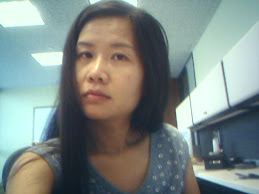
Not sure how to choose a color, prepare a room, or clean a paintbrush? Learn some practical and unusual tips from Brian Santos, the nation's favorite painting expert.
1.Tips for Painting Novices
Q. What are three things a novice should know about painting?
Brian Santos: You might be surprised at the answer! Most of us might guess buying enough paint, priming, or prepping the walls. What do you think?
2.How to Test Paint Colors
Q. What is the best way to try a color before you paint, and why does paint sometimes look different from the paint chips?
Brian Santos: You probably selected the color by looking at it under a different type or intensity of light than what's in your room. Sunlight, daylight, fluorescent light, halogen light, and incandescent light affect colors differently. So bring the sample card into the room you intend to paint and look at it several times during the day. See how the color looks using different kinds of artificial light before making a final decision.
3.Low Sheen or High Shine?
Q. What's the best paint finish or sheen for my room?
Brian Santos: One factor you must consider is sheen, the degree of light reflection off the painted surface. In other words, how much the paint shines. Sheen affects the finish's appearance, durability, and suitability for certain uses. As the amount of sheen increases, so does the enamel value, which determines the hardness or protective value of the coating.
4.Use Color to Solve Problems
Q. How can I use paint color to trick the eye and solve decorating dilemmas, like falsifying the dimensions of a room?
Brian Santos: Your paint selection will depend on the result you desire. For example, if you plan on painting the walls white throughout your home, use the same value of white in every room for a unifying effect.
5.How Much Paint?
Q. How much paint should I buy?
Brian Santos: If you're not a numbers person, the following steps may sound like gibberish. Just take it slowly and break out each step -- at the end you'll arrive at an accurate estimate for the amount of paint you need.
6.Selecting Paint Applicators
Q. What kind of paint applicators are the best?
Brian Santos: You'll be tempted to buy a cheap, throw-away fuzzy-napped roller, but save yourself the headache! A 1/2-inch foam paint roller works faster, easier, and better. You can load three or four times the amount of paint onto the roller. Such porosity means less dipping into the roller tray, which means more coverage in less time. For smaller jobs consider a paint pad. It's a tool that has everything to offer: The pad's foam core holds three times more paint than a brush, has five times more surface area than a regular brush tip, and has bristles that are only 1/4-inch long, so the paint won't dry out. It splatters and drips less than a brush. Most pads even come with a plastic paint tray and airtight snap-on lid.
7.Blue Tape. Now What?
Q. How do you keep paint from seeping under the edges of masking tape?
Brian Santos: The secret to keep this from happening is to heat-seal the tape. Run a tapered plastic tool quickly over the applied edge of the blue masking tape after you've set the tape. This heats the edge of the tape, the waxy adhesive on the tape melts, and when it resolidifies at the edge, it creates a barrier that prevents paint from seeping underneath the tape.
8.Speed Through Cleanup
Q. What's the best way to clean a paintbrush?
Brian Santos: Taking care of brushes, rollers, and pads will save you time, energy, and money. Don't throw your tools in a bucket or sink and expect them to clean themselves; they'll be ruined, and you'll end up throwing them away and buying new ones. What household item can help you clean brushes and rollers in a flash?
9.Wallpaper: Paint or Remove?
Q. Is it easier to paint over old wallpaper than to remove it? If I have to remove it, what tools do I need?
Brian Santos: It depends! Read more for advice and tips on painting, and removing, old wallpaper.
10.Crayon van Goghs
Q. How can I get crayon marks off painted walls?
Brian Santos: With three children, I've tackled more than my share of crayon marks on the wall. The best way to remove these stains is to fold an old T-shirt into a pad several layers thick and place it over a crayon mark, then set an iron at medium heat and run it over the pad.
11.More Painting Secrets from Brian Santos
Would you like to get more tips from Brian Santos? You'll find them in his book, Painting Secrets from Brian Santos, The Wall Wizard, available in bookstores now.
油漆有两大类,水基的和油基的。目前北美能买到的水基漆,一般就是指国内说的乳胶漆。小时候家里刷漆,总有很大的有机体气味,那种漆是油基的。刷子用完了,好像要用汽油什么的泡才行。油基漆刷上很漂亮,但是不环保。现在刷水基漆,没有特别刺鼻的气味,刷子用水冲洗就行,而且水基漆跟油基漆的效果差别也不大了。水基漆不等于刷完了的漆面也溶于水。
小黑用过两个牌子的油漆:Berh和Benjamin Moors。对于内墙面油漆,根据完工以后的效果,有stain,ceiling,egg shell等类型,ceiling paint当然是刷屋顶的,北美很多房子屋顶都是semi-flat的,有很多小突起,需要胶性比较强的漆。egg shell从名字就能猜出来,就是那种能在墙面形成一种蛋壳效果的,俺建议轻易不要用,否则以后改别的漆不太好。对于所有的油漆效果,还有flat、semi-glossary和glossary的区别,也就是亚光、半亚光和亮面。Berh和rona的油漆,分为厨房、厕所用的,还有卧室、客厅用的。我询问过Benjamin Moors的工作人员,据他们介绍,这种分类方法实际上就是说每一种漆的防水防腐性能不一样。厨房卫生间用的漆,对可以水洗、防止发霉等指标要求高一些罢了。而Benjamin Moors则采用高中低档漆的分类方法,新产品还有一类是纯organic的,理论上可以理解成用纯大便喂养的蔬菜。其中的高档漆,基本上家用刷在哪里都可以。当然,买漆的时候最好还是跟工作人员说明白。
Berh的漆相对价格比较便宜,不过个人认为这个牌子漆的最大问题是色相不太好看,不全,如果分两次买相同颜色的漆,颜色会有一定程度的误差。再者就是覆盖性差一些,如果之前墙面有不同的颜色,有时候要刷好几次才能完全盖上。Prime的附着性也差一点,有时候需要刷好几遍。
Benjamin Moors的漆有非常全的色相,并且每种颜色都调得比较漂亮。买漆的时候还可以借用他们的整套色板回家研究,或者先购买小罐的sample。前面说过,他家的产品有不同档次的产品线,此外还有木板漆、金属漆,或者艺术创作用的glaze等等。如果抛开刷漆时候的纹路、光照因素,不同时间购买的Benjamin Moors油漆基本不存在颜色误差的问题。他家的prime也有三种,最好的是一种有强臭味的。基本上不管底面是什么漆,这种prime都能形成一个很好的基础,本人使用过程中,所有需要用prime的墙面都只刷了一次prime。如果你经常看电视,你会发现很多设计师使用的都是这个牌子的产品。
Benjamin Moors漆最大的问题是价格贵,另外似乎漆面比较软,怕磕碰,不适合撞墙自杀。
我家所有墙面选用了602B系列的flat效果漆,所有的木线、门板选用了semi-glossary效果的木材漆。这种木材漆比较稀,不太容易刷,刷不好经常会有流泪的现象。
接下来说刷墙。刷墙是一个看上去貌似简单实则最终会让你耗尽所有耐心直至抓狂的活动。我记得当我刷完最后一笔,真恨不得把刷子吃了。
刷墙最重要的并不是刷颜色,而是之前的准备工作。很多追求完美的人都喜欢在动工之前把墙面用TSP清洗一次。根据实践经验,俺认为除非是墙面上有很多油污,否则基本不用。清洗工作会消耗人很多体力和耐心,很多同学也都是因为使用TSP以后,没有用清水漂洗干净,最终刷成了花墙。真正需要重视的应该是贴边儿、补洞和打磨。
相信绝大多数刷漆的同学都不是专业的painter,即便是小黑同学本人在年轻力壮、风流倜傥、英俊潇洒、玉树临风、迅雷不及掩耳盗铃之势不可挡的少年时代曾经有画过画的经历,对于刷墙也是毫无帮助。画画讲究的是构图、局部和整体的关系、场景主体细节交待等等,刷墙要求的就是均匀和边际整齐,除非是你打算做faux painting。边际整齐,最主要就是要舍得花钱、花精力去贴胶带。市场上可以买到的painter tape有三种:蓝色的3M胶带,绿色的普通胶带和牛皮纸基质半边挂胶的一种胶带。3m胶带太贵,不用考虑。绿色胶带适用范围最广,但是撕下来的时候不太容易。牛皮纸胶带因为只有半边挂胶,使用以后去除很轻松,但是这种胶带只对普通墙面比较有附着力。贴胶带时,靠近要刷漆的一边一定要贴紧,任何细小的缝隙都容易造成虹吸现象,从而形成一个大漆泡。而另一边尽量不要贴紧,以后撕除就容易很多。
补洞相对比较容易。去home depot买一瓶类似油灰的东西和一把小抹刀,回来练习几次就明白了。要领是要果断。用给料的时候稍微比墙洞的体积多一些,然后挥刀给个压力,一笔带过就平了。不明白的同学请回家复习独孤九剑。
最终最能影响漆面效果的是打磨。我度过很多文章,大多数并没有讲明白打磨的作用。可以断定写那些文章的人,基本上没刷过墙。就如同很多爱情小说的作者连姑娘的手都没摸过是一个道理。简单言之,如果不打磨,即便是你刷得很仔细,等漆面风干氧化以后,你会发现墙面上有很多原来底色的细小砂眼。原因就是之前墙面并不平,而这种凹凸,用肉眼很难观察出来。理论上讲最好的刷墙法是先用150-180号左右的砂纸均匀打磨一遍墙面,然后用清水洗去尘土。风干后刷prime。prime晾干以后,再用180号砂纸再打磨,用干抹布擦去粉尘,再刷墙色。墙色干了以后,再用180号砂纸再磨,然后再擦去粉尘,重刷一遍。你会发现,Benjamin Moores的工作人员帮你算出的墙面漆用量基本是这个标准。实际上,作为一个有日常工作的人,第一遍墙色刷好以后,死掉的心都有了。我想另一种有效的手段应该是喷涂。
正式刷墙色反而比较简单,只要选择正确的工具,手法正确即可。刷边际线尽量用一种可以换面板的专用工具,漆要少沾,来回多走几遍,效果肯定比毛刷好。刷主墙面一定用滚筒。最后局部补漆也尽量用小滚筒而不是毛刷。滚筒能在墙面形成统一的纹理,光线照在上面不容易出现区别。semi-flat的屋顶要用15mm厚度的滚筒,刷外墙砖头需要19mm的厚度。一般的墙面好像是10mm-13mm左右的。不要买最便宜的滚筒,那些滚筒刷到最后掉毛,很让人郁闷。个人推荐home depot号称可以加快刷墙速度30%的特福龙滚筒或者Benjamin Moores4-5块左右的滚筒,都是好家伙。刷漆时滚筒尽量大幅度上下运动,小范围来回运动是最忌讳的。开始刷之前的漆要用木棒充分搅拌。刷墙面一定要有足够的耐心,任何失误在后面的任务中都要付出双倍的代价。
刷木线和门板尽量用毛刷或者很薄的滚筒。如果用毛刷,尽量每一遍刷得要尽量薄,运笔方向要一致。刷金属最麻烦,之前的防锈处理至今没有完全有效的手段。也许prime有一些作用,没有实践,不好胡说。
可以用一个废旧床单,刷到哪里,铺到哪里。滚筒架的手柄要长短备之。手边准备一块湿抹布,万一不小心漆蹭到别的地方,赶紧趁没干就用湿抹布弄干净。漆不要一次全都倒进沾滚筒的漆盒,用一点倒一点,往漆盒倒完,漆桶边上和搅拌漆的木棒要用刷子抹干净,防止蹭得到处都是。漆桶随时用橡皮锤封死,防止漆皮氧化。工具用完立刻清洗。
另外,如果是深颜色漆盖浅颜色漆,基本不用prime
prime的作用有两个,一个是做一层基础,另一个是淡化底色。
ceiling轻易不要刷。如果刷,最少横竖刷两遍。
1.Tips for Painting Novices
Q. What are three things a novice should know about painting?
Brian Santos: You might be surprised at the answer! Most of us might guess buying enough paint, priming, or prepping the walls. What do you think?
2.How to Test Paint Colors
Q. What is the best way to try a color before you paint, and why does paint sometimes look different from the paint chips?
Brian Santos: You probably selected the color by looking at it under a different type or intensity of light than what's in your room. Sunlight, daylight, fluorescent light, halogen light, and incandescent light affect colors differently. So bring the sample card into the room you intend to paint and look at it several times during the day. See how the color looks using different kinds of artificial light before making a final decision.
3.Low Sheen or High Shine?
Q. What's the best paint finish or sheen for my room?
Brian Santos: One factor you must consider is sheen, the degree of light reflection off the painted surface. In other words, how much the paint shines. Sheen affects the finish's appearance, durability, and suitability for certain uses. As the amount of sheen increases, so does the enamel value, which determines the hardness or protective value of the coating.
4.Use Color to Solve Problems
Q. How can I use paint color to trick the eye and solve decorating dilemmas, like falsifying the dimensions of a room?
Brian Santos: Your paint selection will depend on the result you desire. For example, if you plan on painting the walls white throughout your home, use the same value of white in every room for a unifying effect.
5.How Much Paint?
Q. How much paint should I buy?
Brian Santos: If you're not a numbers person, the following steps may sound like gibberish. Just take it slowly and break out each step -- at the end you'll arrive at an accurate estimate for the amount of paint you need.
6.Selecting Paint Applicators
Q. What kind of paint applicators are the best?
Brian Santos: You'll be tempted to buy a cheap, throw-away fuzzy-napped roller, but save yourself the headache! A 1/2-inch foam paint roller works faster, easier, and better. You can load three or four times the amount of paint onto the roller. Such porosity means less dipping into the roller tray, which means more coverage in less time. For smaller jobs consider a paint pad. It's a tool that has everything to offer: The pad's foam core holds three times more paint than a brush, has five times more surface area than a regular brush tip, and has bristles that are only 1/4-inch long, so the paint won't dry out. It splatters and drips less than a brush. Most pads even come with a plastic paint tray and airtight snap-on lid.
7.Blue Tape. Now What?
Q. How do you keep paint from seeping under the edges of masking tape?
Brian Santos: The secret to keep this from happening is to heat-seal the tape. Run a tapered plastic tool quickly over the applied edge of the blue masking tape after you've set the tape. This heats the edge of the tape, the waxy adhesive on the tape melts, and when it resolidifies at the edge, it creates a barrier that prevents paint from seeping underneath the tape.
8.Speed Through Cleanup
Q. What's the best way to clean a paintbrush?
Brian Santos: Taking care of brushes, rollers, and pads will save you time, energy, and money. Don't throw your tools in a bucket or sink and expect them to clean themselves; they'll be ruined, and you'll end up throwing them away and buying new ones. What household item can help you clean brushes and rollers in a flash?
9.Wallpaper: Paint or Remove?
Q. Is it easier to paint over old wallpaper than to remove it? If I have to remove it, what tools do I need?
Brian Santos: It depends! Read more for advice and tips on painting, and removing, old wallpaper.
10.Crayon van Goghs
Q. How can I get crayon marks off painted walls?
Brian Santos: With three children, I've tackled more than my share of crayon marks on the wall. The best way to remove these stains is to fold an old T-shirt into a pad several layers thick and place it over a crayon mark, then set an iron at medium heat and run it over the pad.
11.More Painting Secrets from Brian Santos
Would you like to get more tips from Brian Santos? You'll find them in his book, Painting Secrets from Brian Santos, The Wall Wizard, available in bookstores now.
油漆有两大类,水基的和油基的。目前北美能买到的水基漆,一般就是指国内说的乳胶漆。小时候家里刷漆,总有很大的有机体气味,那种漆是油基的。刷子用完了,好像要用汽油什么的泡才行。油基漆刷上很漂亮,但是不环保。现在刷水基漆,没有特别刺鼻的气味,刷子用水冲洗就行,而且水基漆跟油基漆的效果差别也不大了。水基漆不等于刷完了的漆面也溶于水。
小黑用过两个牌子的油漆:Berh和Benjamin Moors。对于内墙面油漆,根据完工以后的效果,有stain,ceiling,egg shell等类型,ceiling paint当然是刷屋顶的,北美很多房子屋顶都是semi-flat的,有很多小突起,需要胶性比较强的漆。egg shell从名字就能猜出来,就是那种能在墙面形成一种蛋壳效果的,俺建议轻易不要用,否则以后改别的漆不太好。对于所有的油漆效果,还有flat、semi-glossary和glossary的区别,也就是亚光、半亚光和亮面。Berh和rona的油漆,分为厨房、厕所用的,还有卧室、客厅用的。我询问过Benjamin Moors的工作人员,据他们介绍,这种分类方法实际上就是说每一种漆的防水防腐性能不一样。厨房卫生间用的漆,对可以水洗、防止发霉等指标要求高一些罢了。而Benjamin Moors则采用高中低档漆的分类方法,新产品还有一类是纯organic的,理论上可以理解成用纯大便喂养的蔬菜。其中的高档漆,基本上家用刷在哪里都可以。当然,买漆的时候最好还是跟工作人员说明白。
Berh的漆相对价格比较便宜,不过个人认为这个牌子漆的最大问题是色相不太好看,不全,如果分两次买相同颜色的漆,颜色会有一定程度的误差。再者就是覆盖性差一些,如果之前墙面有不同的颜色,有时候要刷好几次才能完全盖上。Prime的附着性也差一点,有时候需要刷好几遍。
Benjamin Moors的漆有非常全的色相,并且每种颜色都调得比较漂亮。买漆的时候还可以借用他们的整套色板回家研究,或者先购买小罐的sample。前面说过,他家的产品有不同档次的产品线,此外还有木板漆、金属漆,或者艺术创作用的glaze等等。如果抛开刷漆时候的纹路、光照因素,不同时间购买的Benjamin Moors油漆基本不存在颜色误差的问题。他家的prime也有三种,最好的是一种有强臭味的。基本上不管底面是什么漆,这种prime都能形成一个很好的基础,本人使用过程中,所有需要用prime的墙面都只刷了一次prime。如果你经常看电视,你会发现很多设计师使用的都是这个牌子的产品。
Benjamin Moors漆最大的问题是价格贵,另外似乎漆面比较软,怕磕碰,不适合撞墙自杀。
我家所有墙面选用了602B系列的flat效果漆,所有的木线、门板选用了semi-glossary效果的木材漆。这种木材漆比较稀,不太容易刷,刷不好经常会有流泪的现象。
接下来说刷墙。刷墙是一个看上去貌似简单实则最终会让你耗尽所有耐心直至抓狂的活动。我记得当我刷完最后一笔,真恨不得把刷子吃了。
刷墙最重要的并不是刷颜色,而是之前的准备工作。很多追求完美的人都喜欢在动工之前把墙面用TSP清洗一次。根据实践经验,俺认为除非是墙面上有很多油污,否则基本不用。清洗工作会消耗人很多体力和耐心,很多同学也都是因为使用TSP以后,没有用清水漂洗干净,最终刷成了花墙。真正需要重视的应该是贴边儿、补洞和打磨。
相信绝大多数刷漆的同学都不是专业的painter,即便是小黑同学本人在年轻力壮、风流倜傥、英俊潇洒、玉树临风、迅雷不及掩耳盗铃之势不可挡的少年时代曾经有画过画的经历,对于刷墙也是毫无帮助。画画讲究的是构图、局部和整体的关系、场景主体细节交待等等,刷墙要求的就是均匀和边际整齐,除非是你打算做faux painting。边际整齐,最主要就是要舍得花钱、花精力去贴胶带。市场上可以买到的painter tape有三种:蓝色的3M胶带,绿色的普通胶带和牛皮纸基质半边挂胶的一种胶带。3m胶带太贵,不用考虑。绿色胶带适用范围最广,但是撕下来的时候不太容易。牛皮纸胶带因为只有半边挂胶,使用以后去除很轻松,但是这种胶带只对普通墙面比较有附着力。贴胶带时,靠近要刷漆的一边一定要贴紧,任何细小的缝隙都容易造成虹吸现象,从而形成一个大漆泡。而另一边尽量不要贴紧,以后撕除就容易很多。
补洞相对比较容易。去home depot买一瓶类似油灰的东西和一把小抹刀,回来练习几次就明白了。要领是要果断。用给料的时候稍微比墙洞的体积多一些,然后挥刀给个压力,一笔带过就平了。不明白的同学请回家复习独孤九剑。
最终最能影响漆面效果的是打磨。我度过很多文章,大多数并没有讲明白打磨的作用。可以断定写那些文章的人,基本上没刷过墙。就如同很多爱情小说的作者连姑娘的手都没摸过是一个道理。简单言之,如果不打磨,即便是你刷得很仔细,等漆面风干氧化以后,你会发现墙面上有很多原来底色的细小砂眼。原因就是之前墙面并不平,而这种凹凸,用肉眼很难观察出来。理论上讲最好的刷墙法是先用150-180号左右的砂纸均匀打磨一遍墙面,然后用清水洗去尘土。风干后刷prime。prime晾干以后,再用180号砂纸再打磨,用干抹布擦去粉尘,再刷墙色。墙色干了以后,再用180号砂纸再磨,然后再擦去粉尘,重刷一遍。你会发现,Benjamin Moores的工作人员帮你算出的墙面漆用量基本是这个标准。实际上,作为一个有日常工作的人,第一遍墙色刷好以后,死掉的心都有了。我想另一种有效的手段应该是喷涂。
正式刷墙色反而比较简单,只要选择正确的工具,手法正确即可。刷边际线尽量用一种可以换面板的专用工具,漆要少沾,来回多走几遍,效果肯定比毛刷好。刷主墙面一定用滚筒。最后局部补漆也尽量用小滚筒而不是毛刷。滚筒能在墙面形成统一的纹理,光线照在上面不容易出现区别。semi-flat的屋顶要用15mm厚度的滚筒,刷外墙砖头需要19mm的厚度。一般的墙面好像是10mm-13mm左右的。不要买最便宜的滚筒,那些滚筒刷到最后掉毛,很让人郁闷。个人推荐home depot号称可以加快刷墙速度30%的特福龙滚筒或者Benjamin Moores4-5块左右的滚筒,都是好家伙。刷漆时滚筒尽量大幅度上下运动,小范围来回运动是最忌讳的。开始刷之前的漆要用木棒充分搅拌。刷墙面一定要有足够的耐心,任何失误在后面的任务中都要付出双倍的代价。
刷木线和门板尽量用毛刷或者很薄的滚筒。如果用毛刷,尽量每一遍刷得要尽量薄,运笔方向要一致。刷金属最麻烦,之前的防锈处理至今没有完全有效的手段。也许prime有一些作用,没有实践,不好胡说。
可以用一个废旧床单,刷到哪里,铺到哪里。滚筒架的手柄要长短备之。手边准备一块湿抹布,万一不小心漆蹭到别的地方,赶紧趁没干就用湿抹布弄干净。漆不要一次全都倒进沾滚筒的漆盒,用一点倒一点,往漆盒倒完,漆桶边上和搅拌漆的木棒要用刷子抹干净,防止蹭得到处都是。漆桶随时用橡皮锤封死,防止漆皮氧化。工具用完立刻清洗。
另外,如果是深颜色漆盖浅颜色漆,基本不用prime
prime的作用有两个,一个是做一层基础,另一个是淡化底色。
ceiling轻易不要刷。如果刷,最少横竖刷两遍。







































































































































No comments:
Post a Comment